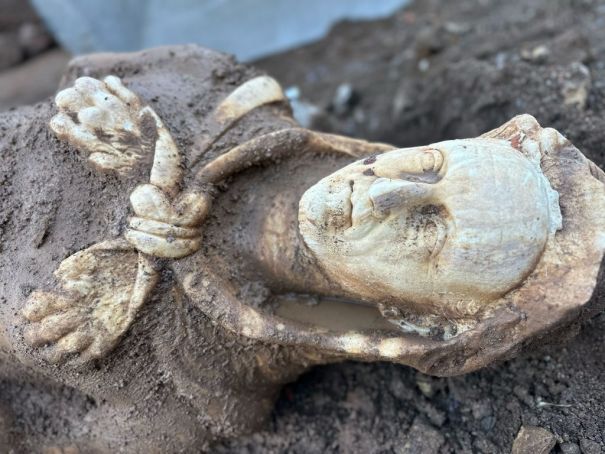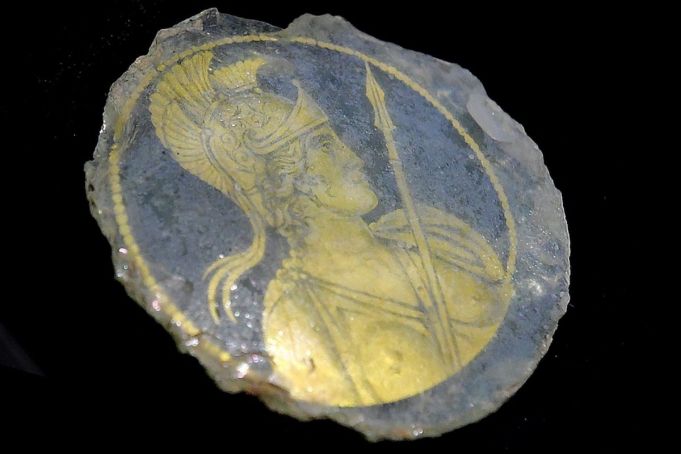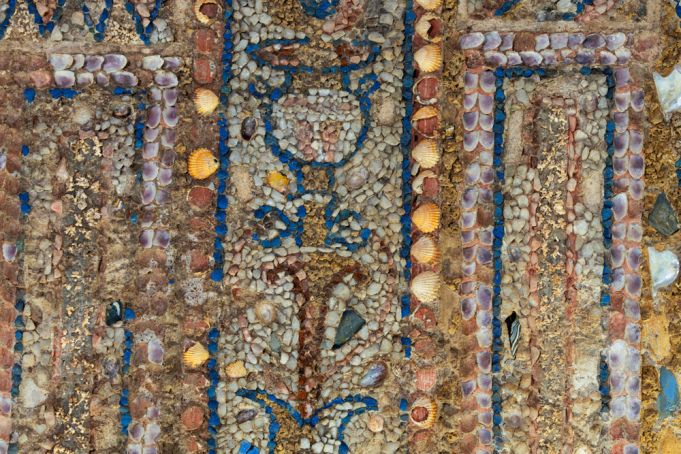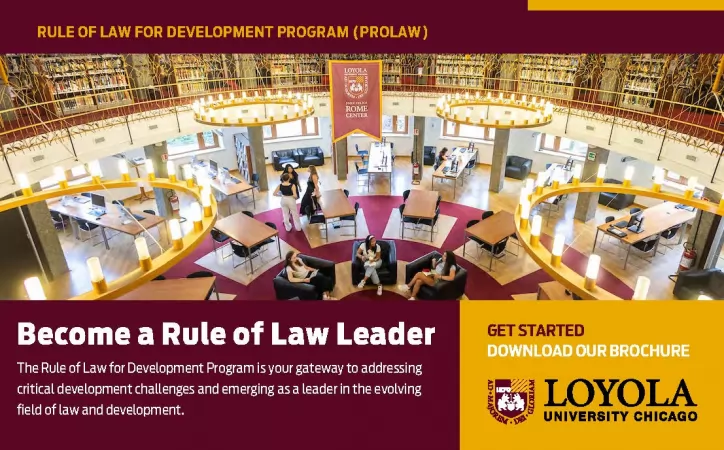2023 was a big year for Ancient Rome
Bumper year for bringing Ancient Rome back to life.
Ancient Rome was a hot topic in 2023, exploding as a trend on TikTok and making headlines around the world frequently throughout the year.
Here is a round-up of some of the biggest Ancient Rome stories from the Eternal City in 2023.
Appian Way
The year began with Italy confirming its bid to have the Via Appia Antica inserted in the UNESCO World Heritage List, pending a decision in summer 2024.
The bid refers to the full Appian Way route, from Rome to Brindisi, including the Via Traiana built by Emperor Trajan as an extension of the ancient Roman road from Beneveneto to Brindisi.
A taste of Via Appia Antica #Rome pic.twitter.com/7Zq1rw0slx— Wanted in Rome (@wantedinrome) February 19, 2022
Dating to 312 BC, the Via Appia Antica is the first and most important of Roman roads and was known by the Romans as Regina viarum or "Queen of the Roads".
Hercules
In January Rome archaeologists unearthed an ancient statue of a figure in the guise of Hercules during sewage works in Parco Scott, around the second mile of the Appian Way.

The life-size marble statue with the trademark club and lion skin of Hercules was subsequently identified as a portrayal of Emperor Decius who ruled Rome from 249 to 251 AD.
Gold glass Roma
In February a rare representation of the goddess Roma on ancient gold glass emerged during construction works for Rome's third subway line.
Originally the base of a drinking glass, the discovery featured an image of the female deity – the personification of the city of Rome – wearing a helmet and carrying a spear.

It was the first time that any representation of Roma in gold glass was ever found, according to Rome archaeologist Simona Morretta, who described the artefact as "extraordinarily refined".
Gold glass is a luxury form of glass where a decorative design in gold leaf is fused between two layers of glass. The majority of surviving Roman examples are cut-off bases of drinking glasses.
Colosseum lift
In May the Colosseum unveiled an elevator to make the site more accessible for people with mobility difficulties as well as offering panoramic views over the Rome landmark.
The new lift, which allows visitors to reach the highest levels of the ancient amphitheatre, was inaugurated by Italy's culture minister Gennnaro Sangiuliano.
The Orchestra Italiana del Cinema performing music from The Gladiator soundtrack in the Colosseum as the sun goes down. Priceless. pic.twitter.com/h5L1hVnDqC— Wanted in Rome (@wantedinrome) May 30, 2023
The occasion was marked by the Orchestra Italiana del Cinema which performed music from the soundtrack of The Gladiator along with a recorded message from the movie's star Russell Crowe.
Largo Argentina
In June Rome opened the archaeological site in Largo di Torre Argentina to the public for the first time following a major development project sponsored by luxury jeweller Bulgari.
The new itinerary offers information in English and Italian tracing the history of the ancient site down through the centuries, from the Republican age to the imperial and mediaeval times, up to its rediscovery last century with the demolitions during the Fascist period.

The so-called sacred area at Largo Argentina is best known as the scene of Julius Caesar's assassination, as well as being home to a cat sanctuary.
The new elevated walkways offer close-up views of the four Roman Republican temples, including the circular monument to the goddess of Fortune, and the remains of Pompey's Theatre.
Theatre of Nero
In July Rome archaeologists announced the discovery of what is believed to be the ruins of the Theatre of Nero whose location has always been a mystery.
The legendary private theatre was built by Emperor Nero, who reigned from 54-64 AD, however until now it was known only from ancient Roman texts.
The find was made close to St Peter's Square in the grounds of Palazzo della Rovere, the home of the Equestrian Order of the Holy Sepulchre of Jerusalem, a historic Catholic order of knighthood under the protection of the Holy See.

Hailing it as "exceptionally important", Rome's archaeological superintendent Daniela Porro said the discovery testifies "to the presence of the Theatrum Neronis mentioned in ancient sources from Pliny to Suetonius and Tacitus, but so far never found."
Archaeologists unearthed part of a hemicycle-shaped seating area, marble columns, gold-leaf plaster decorations and rooms believed to have been used to store theatre costumes and stage sets.
Also found were precious first-century AD artefacts including a two-faced Roman head of Janus, rare examples of 10th-century glass coloured goblets, and items related to pilgrims in the Middle Ages including a crucifix and rosary beads.
The excavations, which got underway in 2020, are part of the redevelopment of the Renaissance palace as a future Four Seasons Hotel which reportedly plans to open in time for the Vatican's Jubilee 2025.
Domus Tiberiana
The biggest news of the year came in September with the reopening of the Domus Tiberiana imperial palace on Rome's Palatine Hill, after almost 50 years, following a major restoration by the Colosseum Archaeological Park.
The imposing building, which sprawls over a four-hectare site on the Palatine, was closed in the 1970s due to serious structural problems triggered by excavations in the early 20th century.
The monumental arched landmark restores an important link between the Roman Forum and the Palatine Hill, with visitor access from the Farnese Gardens and the ramp of Domitian.
Rome’s Domus Tiberiana imperial palace on the Palatine Hill tonight ahead of its reopening after 50 years and a major restoration. Magical. pic.twitter.com/iSU54pHCQi— Wanted in Rome (@wantedinrome) September 20, 2023
Although named after the second Roman emperor Tiberius, who reigned after Augustus from 14 to 37 AD, archaeological studies have revealed that the building's foundations were laid by Nero at some point after the fire of 64 AD or in tandem with the construction of the Domus Aurea.
The Domus Tiberiana was expanded further by the emperors Domitian and Hadrian, and in the eighth century Pope John VII chose the palace as his residence.
During the Middle Ages the domus drifted into a state of complete abandonment, with its building materials pillaged, until the mid-16th century when the Farnese family brought the residence back to life with their "garden of delights".
Inside the magnificent Domus Tiberiana, newly restored with amazing new museum spaces. pic.twitter.com/v9ZL2D9NGc— Wanted in Rome (@wantedinrome) September 20, 2023
In 1861 the site came into the hands of French emperor Napoleon III whose excavations led to the discovery of most of the ancient buildings still visible.
Further excavations were carried out during the 20th century however in the 1970s the site was closed, due to serious risk of collapse, before undergoing decades of restoration work.
Rain Nymphaeum
In November the Ninfeo della Pioggia or Rain Nymphaeum on the Palatine Hill reopened to the public following extensive restoration works by the Colosseum Archaeological Park.
The cave-like nymphaeum is part of the elaborate Farnese Gardens complex, built by the powerful Farnese family in the 16th century, and is located at the centre of the monumental ramp leading up to the Palatine from the Roman Forum.
New opening on Rome’s Palatine Hill.
The newly restored Rain Nymphaeum or Ninfeo della Pioggia at the Horti Farnesiani, closed to the public for decades, reopens on 1 November. pic.twitter.com/9KYAe9LTea— Wanted in Rome (@wantedinrome) October 26, 2023
Decorated with wall paintings and a grotto-style fountain made of stone and stucco, the vaulted structure is one of the most important testimonies of Roman culture from the late Renaissance and Baroque eras.
Roman domus
In December a newly-discovered Roman domus, unearthed between the Palatine Hill and the Roman Forum, was unveiled by the Italian culture ministry.
The ancient structure, which dates to the late Republican age, was built in at least three phases between the second half of the second century BC and the end of the first century BC.
The domus is located in the area of the Horrea Agrippiana warehouse complex along the Vicus Tuscus, a trading street that linked the Roman Forum to the river port on the Tiber.
A highlight of the newly-unearthed domus is a 'rustic' mosaic which has been described as "beyond compare" by culture officials.

Dating to the last decades of the second century BC, the mosaic is made from sea shells, Egyptian blue tesserae, precious glass, tiny fragments of marble and other coloured stones.
The mosaic depicts figurative scenes of land and sea, including weapons and ships, possibly alluding to a military triumph linked to the owner of the domus, a nobleman likely a senator.
Centred around an atrium, the domus presents a "specus aestivus", a grotto-style space that served as a banquet hall in the summer and was once animated by spectacular water effects.
Colosseum Archaeological Park director Alfonsina Russo said the excavations are set to conclude early in 2024, stating: "We will work intensely to make this place, among the most evocative of Ancient Rome, accessible to the public as soon as possible."
Article by Andy Devane. Cover image: Domus Tiberiana, photo Wanted in Rome.


















